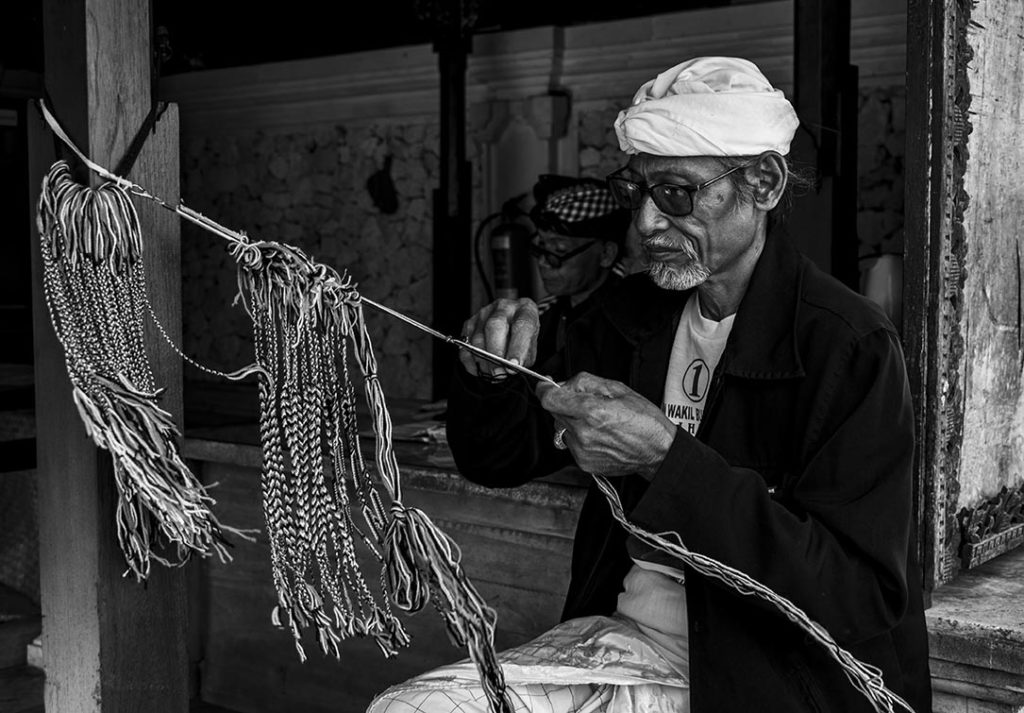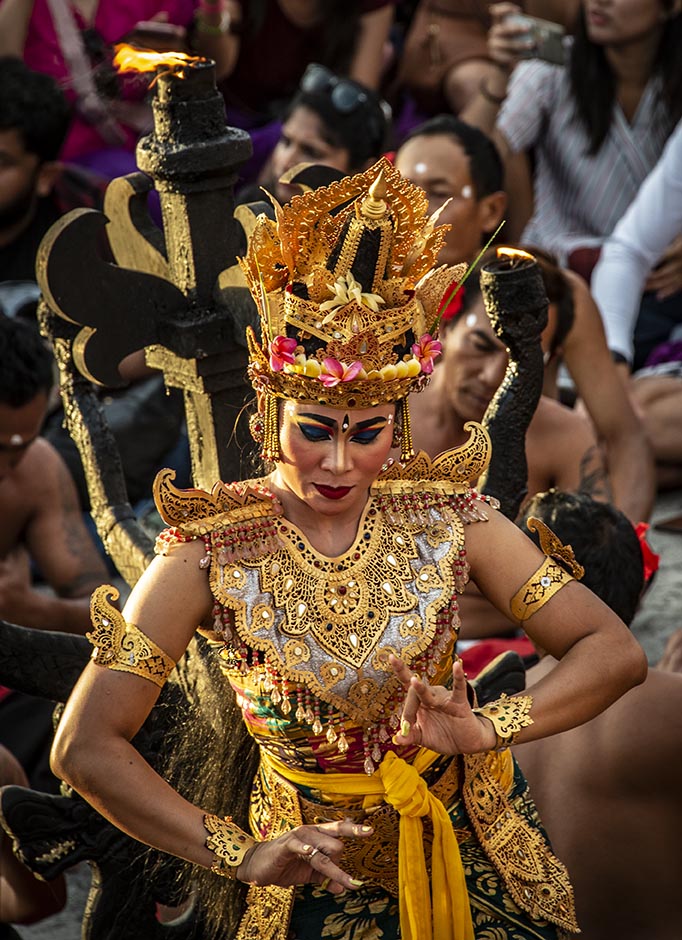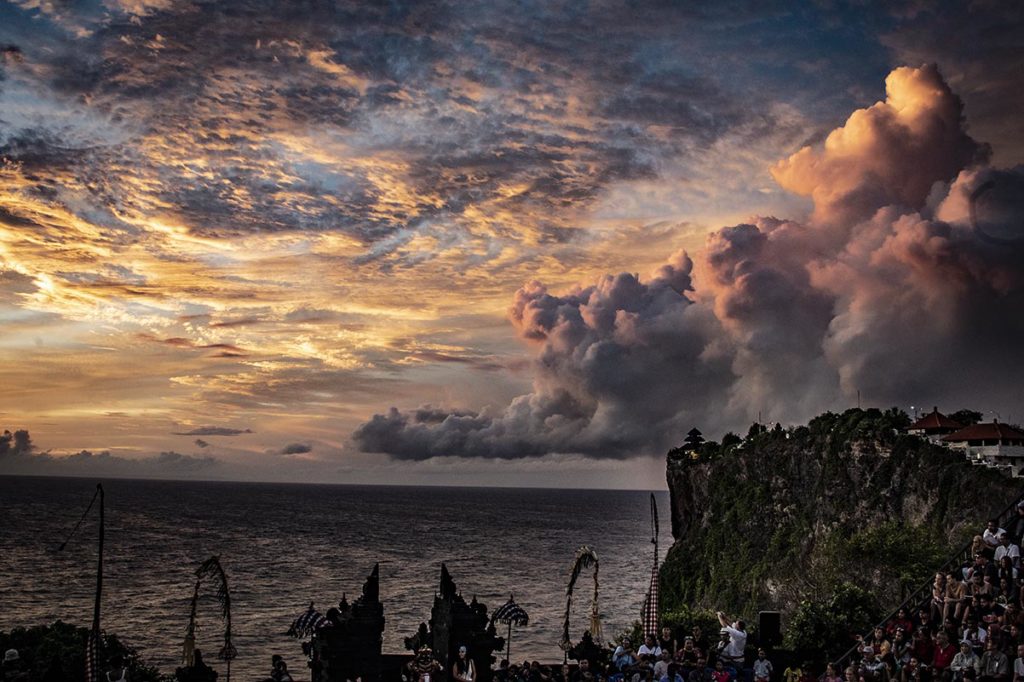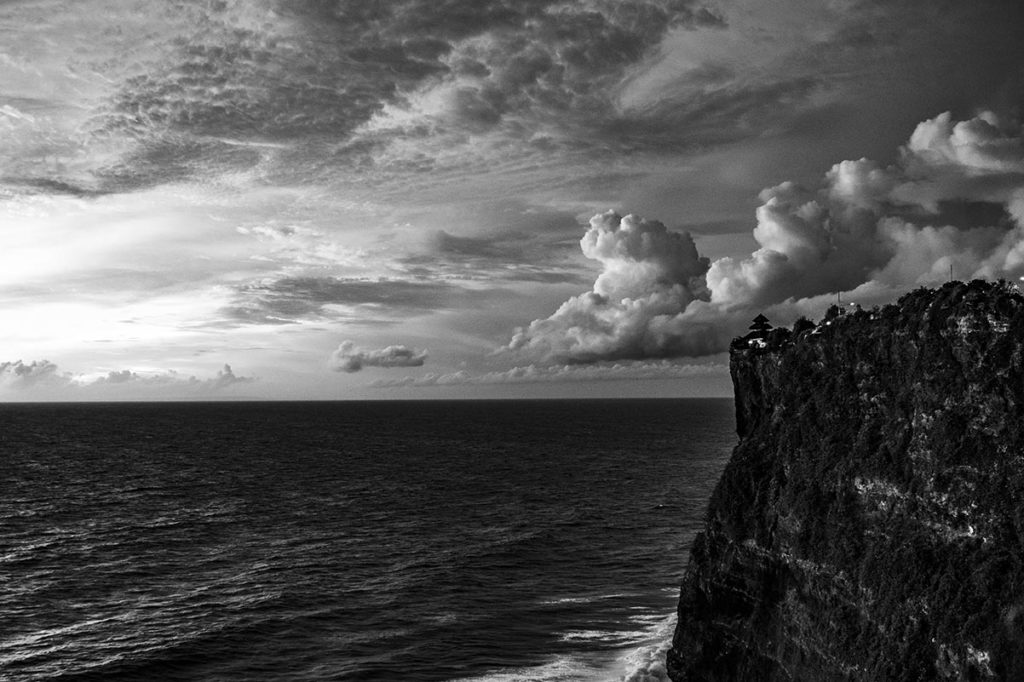‘Salam’, or Bali ‘Hi!’

We’ve been in Bali since February 4thand the first word I have learned is ‘Salam’, or ‘hello.’ I swear we are both still recovering from our Indian sojourn, which seems odd to me given basically all our travel arrangements were made for us. But then again, when there are issues the stress can wear you down and our trip through India was not without issues. But that’s another story.
For the moment, we are in Bali and trying to sink into the Balinese culture and balance.
We spent the first few days in a place called Jimbaran that is on the coast, south of the major city of Denpasar and the tourist haven of Kuta. We arrived and both of us were overwhelmed by the beauty of our residence. We had a room with sliding glass doors onto a balcony and small plunge pool overlooking the Balinese beach of Jimbaran. It took us a few days to realize that we were right above the Four Seasons resort at less than a quarter of the cost and we were staying in a heritage building owned by an architect who was committed to maintaining the jewel that he had.
A ten-minute walk downhill had us on the sweeping crescent of Jimbaran Beach where I collected shells and, in the evening, we went to a dinner of barbequed, squid, clams, fish, prawns and lobster for about $30.00 each. The seafood, with the addition of rice and water spinach was to die for and as an added bonus we were treated to a spectacular sunset. I’m told that every sunset is just as good.

We visited one of the three key ocean temples in Bali, this one called Ulu Watu. We intended to watch the sunset and the sunset Kacek dance. Unfortunately, you can’t actually do both, or at least you can’t watch the sunset over Ulu Watu because the temple is in the wrong direction from where they hold the dance, so the dance won out. While the dancers wear the ornate costumes that you might associate with Bali, the dance itself is actually quite original—at least at Ulu Watu.
The performance begins with about thirty men who come into the performance area chanting, to settle around a tall, wooden candelabra-type stand that has small flames lit on each of its arms. They chant and then, one by one, the dancers entered telling the story of Rama and Sita out of the Ramayana. The difference I saw in this dance compared to the dancers from the performance I wrote about in Kochi, was that these dancers seemed to move in utter, perfected, slow-motion.

Except for Hanuman.
The mischievous white monkey god was up to his tricks from the moment he entered the story, leaping into the story from on top of the gate, and climbing up among the audience, stealing hats and glasses and picking imaginary nits out of people’s hair.
Anyway, the performance was wonderful, Sita was rescued, the evil Ravana was vanquished, and everyone except Ravana lived happily ever after—except for us, because traffic leaving the temple made us endure a trip home that was well over an hour long.

But it was a good introduction to Bali. We’re both impressed, not least of all by the driving. Though there are a lot of cars and motorbikes on the road it’s not the bone-jarring, psyche-scarring, free-for-all we survived in India. Instead, here traffic more or less obeys the traffic lanes and vehicles will actually stop for a pedestrian.
That brings me to the second Balinese word/phase I’m trying to remember: terima kasih, or thank you! Terima kasih for these past few days, Bali.










